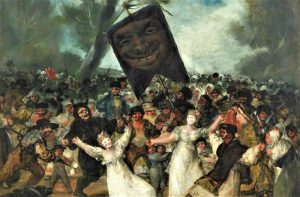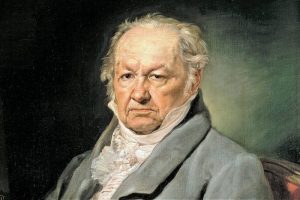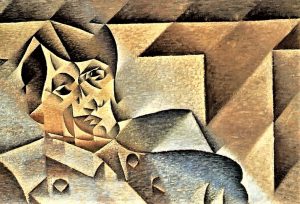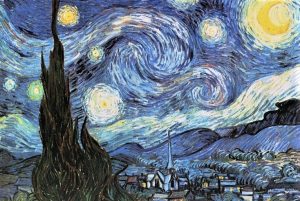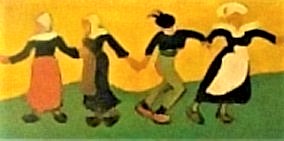Romanticism
After some calm epochs, full of serenity and strict monotony, a sudden change had to exist that overflowed the population in emotions and impulsivity, this was not only an epoch, it was a movement, a tendency, that marked a before and an after in human history; romanticism came to strike against all neutrality and serenity, filling the inhabitants of the land with dilemmas and disasters that, although they did not want to, they enjoyed too much.
What is romanticism?
It is a cultural movement that originated in Germany, United Kingdom, France and Spain, born from the rebellion to the typical, rational and ordinary; romanticism denies the perception of a reality without drama, without colors and to vary with absurd monotonies.
About romanticism
This cultural movement is based more than anything else on the breakdown of all those patterns of earlier times, classicism, neoclassicism and rationalism, born with the irreverent feverish desire to want to postpone all serenity, ordinariness. For romanticism, imperfection is the net symbol of beauty, and the fact that ancient cultural movements were so methodical and perfectionist, led this movement to be the revolution against them.
In its totality, romanticism is a bottle of imperfections, impulses, feelings and emotions derailed and uncontrolled, irrationality dominates, one does not think, one acts, the reasoning for this cultural movement does not remain in second place, it remains much lower, because in this epoch, everything is based on net expression, behaviors full of vigor shaped in diverse ways to transmit emotions and other things that only romanticism in its epoch was able to do.
Origin
Romanticism was born from the simple search for a reality that was not expressed, that is its raw expressed origin, the need to express erratic feelings, atrophied and rapturous, full of passion and emotion, the need to give that touch of vivacity and sparkle things that classicism, nor neoclassicism gave to society.
History
It arose in Europe at the end of the 19th century, it was the first cultural movement that covered the whole of Europe and thus expanded throughout the world, approximately between 1800 and 1850 the movement was in full swing, all cultures rooted it so, because they were interested in the oppositionist ideology that maintained and that desire to express more vividly the realities through which a human being passes.
However, the movement is something purely liberal, expressive and individual. Each country and each nation for the time adapted it to itself, thus catapulting this cultural stage to a further level, projecting the same ideal and the same perception but with different tendencies, which made it extremely particular.
Countries in which it was developed
- Germany.
- England.
- Spain.
- France.
- Colombia.
- Argentina.
- Cuba.
- Chile.
- Venezuela.
- Italy.
- Russia.
- Portugal.
- Romania.
- Mexico.
Stages
- Until 1825: In this stage, romanticism was more modest, it expanded with timidity between those years, yearning that they accepted their ideals, in 1825 what was desired was to opaque not in an immediate way all the old lie about neutrality and serenity implied in humanity; in this period the most relevant figures were: Schlegel, De Maistre and Bonald.
- After 1825: This stage is characterized by being more energetic and primitive, the instincts, impulses and emotions take control, driving an oppositionist revolution, freedom was essential, and the formation of values was paramount.
Objective
The final objective of romanticism was simple, the human being in his nature and his simplicity, developing and acting without concealment, nor limitations, demonstrating and expressing everything that appeased the reason; doing in this way that the true personality was reflected, that a new being flourished without fear of being judged for being imperfect.
Romanticism focused mainly on that, on self-love and love of neighbor, with its defects and virtues, its outbursts and charms.
Romanticism in art
The first paintings created in romanticism tried to focus on love towards an object, a place, or towards a person, changing in this way the perspective of spectator, so that, the spectator instead of simply observing an artwork experienced in his own skin the feeling, the emotion of that work.
After that, the artists wanted to innovate in more turbulent waters, something more controversial that flashed to the eye, so they began to mix what were all the tragic events, real and visceral of the time, as wars and struggles, with romance, making the works somewhat bittersweet for the viewer.
The paintings of the artists who deviated towards this tendency told stories of love and disaffection without the need for words, even if it was tragic or nostalgic, for the spectators it was wonderful to be able to witness these emotions so precisely marked in each brushstroke.
Romanticism in literature
Romance began to appear, however, as the person was the center of attention of romanticism, initiated the relevance of autobiographies and monologues, appeared historical novels and became famous Gothic, however, literature was used more in theater, when making scripts, as it was a faster way to get the message and emotions to the public.
Themes of romanticism
The main themes of romanticism are:
- Feelings and emotions.
- The human being.
- Imagination.
- Nature.
- Nostalgia.
- Rejection and opposition to absolutist themes.
- Individualism.
- Beauty.
- Imperfection.
- Everyday elements transformed into exotic.
Causes
- Erroneous idealizations of the human being.
- Rationalism.
- The vague desire for perfection.
- Monotony.
- Stereotypes and predispositions.
- Classism and neutrality alien to reality.
Consequences
Some of the consequences of romanticism were:
- Emotional revolution.
- Freedom of expression.
- It triggered the recognition of the human being as important, valuable and unique.
- It prioritized individuality.
- It united all cultures, and all people with tendencies rooted in art or creation.
- It exposed the reality that was tried to hide under the order and neutrality of the previous movements.
Romanticism by country
England
The majority of the population of England did not feel very identified with classicism, so when it came to change the movement they were not overly opposed, adapting quickly thanks to this and adopting the ideals as their own. The works developed in England focused on landscapes and the importance of expressing emotions through them.
Germany
Although in Germany the neoclassical culture and principles were rooted, a group of aesthetic-religious artists undertook the path towards romanticism, applying it to works of Nazarenes, showing a genuine and pure religious love based on Christianity.
France
Neoclassicism was the cultural movement that identified the empire, so romanticism took a little time to reach that importance, when Napoleon fell the movement emerged among the shadows, pleasing the French population and inspiring them; after Napoleon, the first signs of romanticism that come to light had an historical and romantic air, however, was not a usual romance, those works reflected a romance on vacant land desperate, devastated and abandoned, so transmitting too much nostalgia to admire themselves when admired.
Spain
Spain follows the social flows and the first signs that are seen in the country of romanticism are works of art mixed between history and the cultural movement, only that the artists instead of doing the tragic historical fact, added subtlety in a slight way applying the romanticism.
Representatives
Among the many representatives of romanticism, we highlight:
- Caspar David Friedrich
- Francisco José de Goya y Lucientes
- José Mallord Guillermo Turner
- John Constable
- William Blake
- Eugène Delacroix
- Jean-Louis André Théodore Géricault
- Johann Wolfgang von Goethe
- Friedrich Schiller
- Edgar Allan Poe
- Victor Hugo
- Lord Byron
- Walter Scott
- Gustavo Adolfo Bécquer
- Esteban Echeverría
- Juan Antonio Pérez Bonalde
Works
Among the most outstanding works of romanticism we highlight:
- Witches going to the Sabbath, Luis Ricardo Falero.
- The burial of the sardine, Francisco de Goya.
- The storm, Gustave Courbet.
- Satire of Romantic Suicide, Leonardo Alenza.
- Safo de lesbas, Charles Mengin.
- The raft of the jellyfish, Théodore Géricault.
- Freedom guiding the people, Delacroix.
- The walker on the sea of clouds, David Friedrich.
- The nightmare, Heinrich Füssli.
- Rain, steam and speed, William Turner.
- Snowstorm in the sea, William Turner.
- The hay cart, John Constable.
- Ofelia, John Everett Millais.
- Venus anadiomene del Prado, Antonio María Esquivel.
Books
- Don Juan Tenorio, José Zorrilla.
- The student from Salamanca, José de Espronceda.
- The Roots of Romanticism, Isaiah Berlin.
- Romanticism in Castilian poetry, Cesar Vallejo.
- Don Quixote de la Mancha, Miguel de Cervantes Saavedra.
- Pirate´s song, José de Espronceda.
- The sorrows of the young Werther, Johann Wolfgang von Goethe.
- Hernani, Victor Hugo.
- Les Miserables, Victor Hugo.
- Wuthering Heights, Emily Brönte.
- Ivanhoe, Walter Scott.
- The Pilgrimages of Childe Harold, Lord Byron.
Importance
The simple fact that romanticism took place, ignited a spark in all humanity, which was previously pacified by all that reasoning to which the population was used to, however, this cultural movement stirs everything up, giving a complete turn to the meaning of life, without this revolution in favor of the expression of emotions and the freedom of being itself, the population did not have a fully rooted identity and would remain chained to the customs and the old-fashioned neutrality.
In addition to this, romanticism was a propeller for the performing arts and theatre, so these manifestations of art would not be appreciated today.
How to cite this article?
Briceño V., Gabriela. (2019). Romanticism. Recovered on 23 February, 2024, de Euston96: https://www.euston96.com/en/romanticism/
